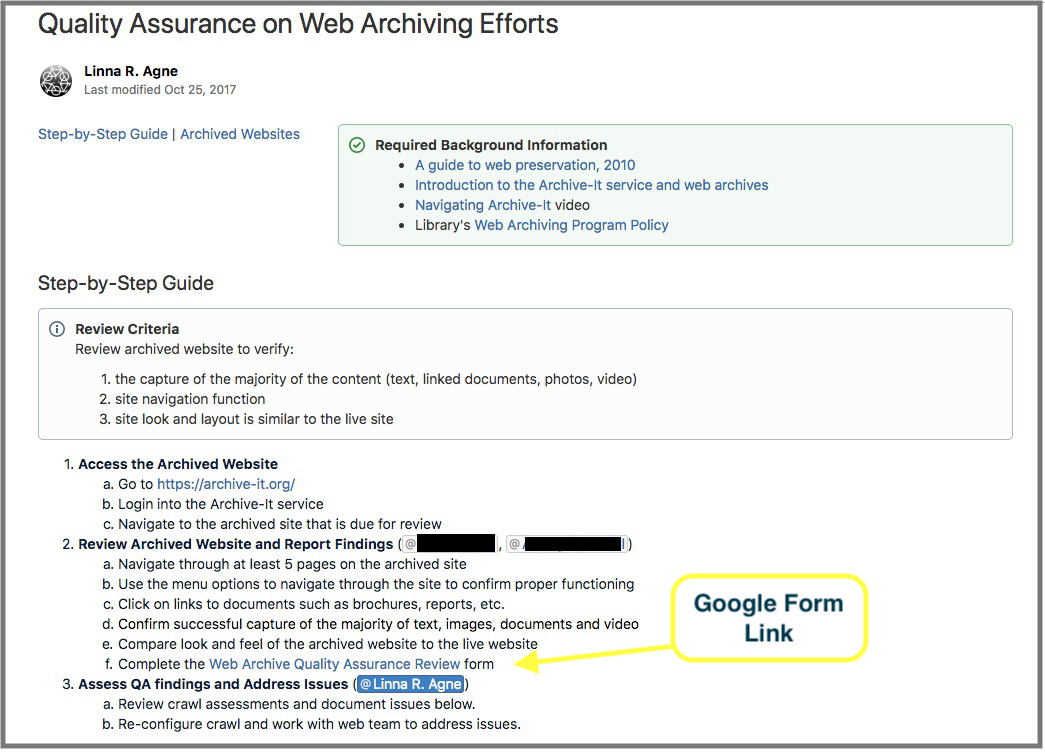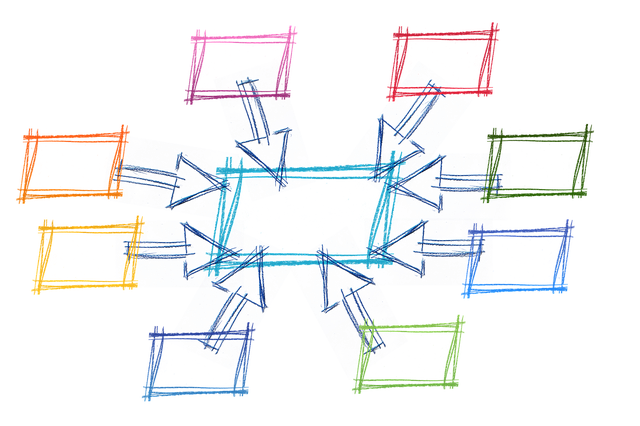The creation, management and sharing of policy, documentation and procedures provides consistency, builds on previous experience and supports growth within a library or archive. The implementation of a wiki application is an effective way to manage the policy, documentation and procedural documents as well as enhance collaboration. My central experience is leading the effort in 2016 to select and implement a wiki application. Confluence Cloud was selected for the mix of features and affordability. In the process, there were several essential features that stood out during the assessment of the available applications.
Must-Have Features
- Import feature that allow for easy import of new pages from Microsoft Word documents.
- “What you see is what you get” (WYSIWYG) editor that feels similar to a word processing application.
- Export wiki pages in flexible formats such as PDF or Microsoft Word. Useful for creating handouts for meetings or sharing a page via email.
- Multi-faceted user management including granular edit and access permission by user groups.
- For hosted applications, a clear pricing plan that does not include pricing by data usage.
There are a few specific collaborative features to look for when assessing wiki applications. In particular, inline comments, user mentions and multiple users editing a page at the same time greatly increase the functionality of the wiki. The inline comments and user mention features help to generate conversations around policies and procedures.

Image Source: Confluence Inline Comments
Wiki Application vs. Google Drive
In general, it is ideal to use a software application in a way that aligns with the application’s original purpose. Google Drive is a file storage system with associated web-based file authoring applications (Google Docs, Google Sheets, etc.) that offers collaborative features and file sharing options. A wiki application is essentially several editable webpages that allows for a contextualized and well-defined structure and often includes several collaborative features. A wiki homepage provides context for grouping pages together such a work resources area for information about employee benefits and commonly used resources. Confluence has a good explanation of the difference in features and Josh Todd’s post explains the differences in a workplace context.
In practice, the files stored in Google Drive can be placed in context within the wiki. In the example below, the shared Google Form link is included in the web archiving quality assurance instructions on the wiki. This allows for a fuller explanation on how to complete the review before filling out the quality assurance form.


